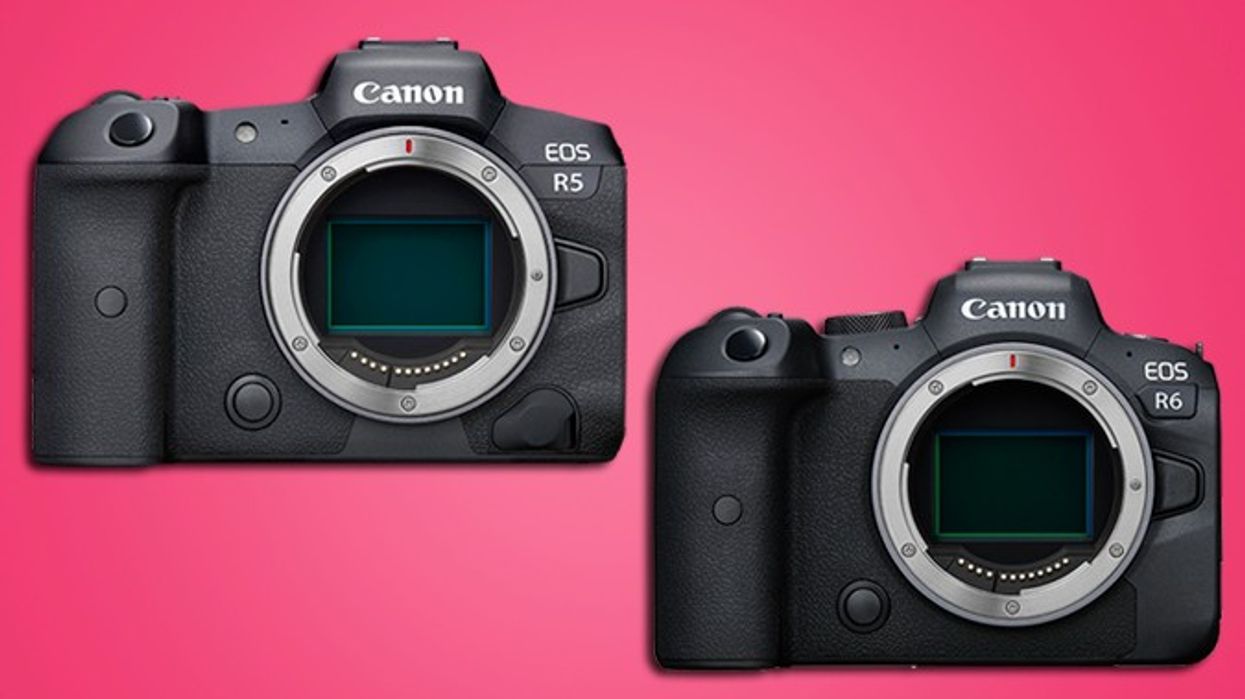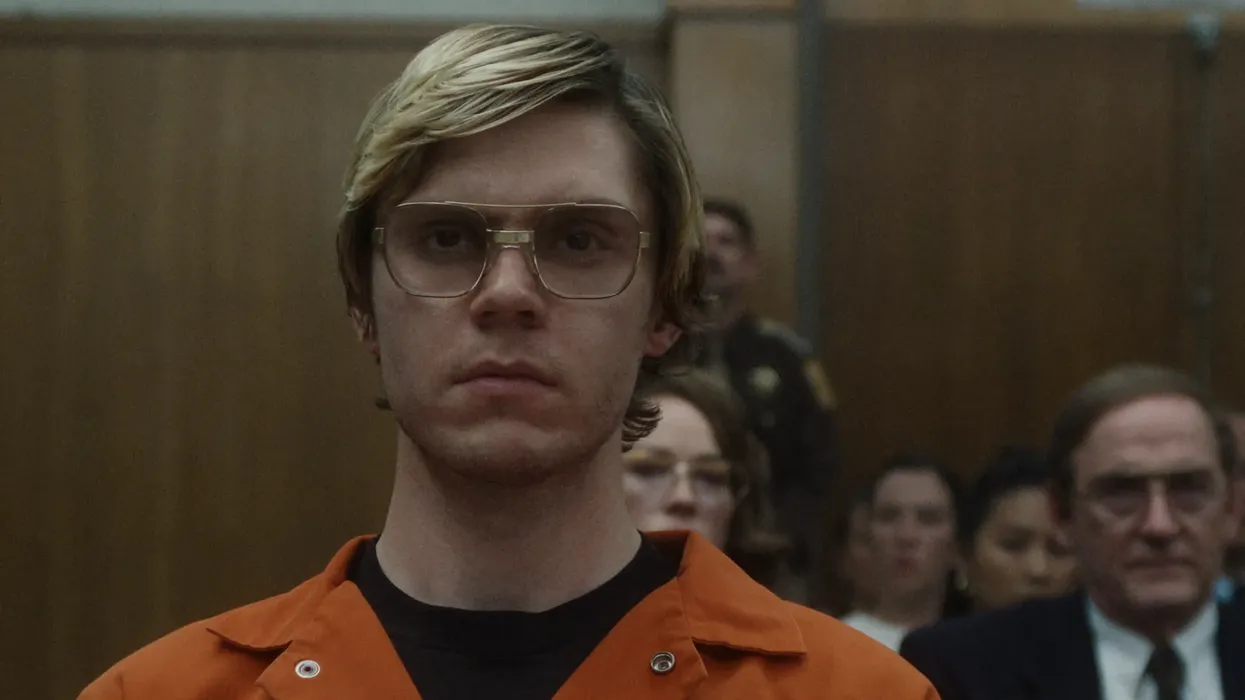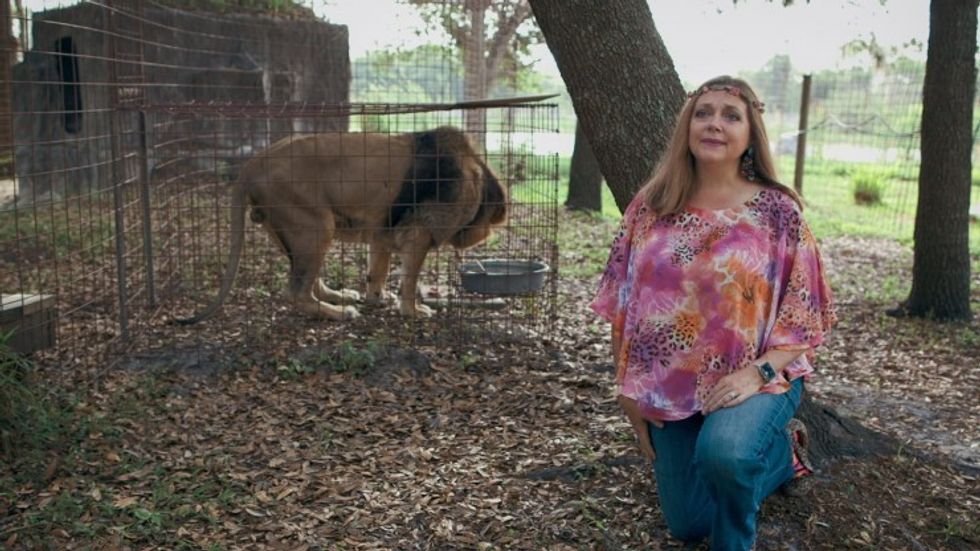Which One is Better, The Canon EOS R5 or R6?
Comparing Canon's 2 latest full-frame mirrorless cameras.

When Canon announced the EOS R5, a lot of attention was given to its 8K recording format, and rightfully so. But as we now know, there are some serious record time limitations when shooting 8K. While those limitations were somewhat expected with a smaller camera body, the recovery time of the camera when shooting 8K or in its 4K oversample modes makes it difficult to use on any serious production.
If you're looking for 4K DCI or 4K UHD up to 30p, the EOS R5 handles those formats well, but how does the EOS R5 stack up against the similarly featured R6? We put it through the test. Watch the video below.
Body
The differences between R5 and R6 bodies are slight. Both have the same chunkier build when comparing it to the original EOS R, but the R6 will have a top mode dial knob that allows you to switch between camera and still modes. In the same position on the R5, there's a top screen on which you can view the current settings of the camera.
In terms of the viewfinder, the R5 has a slight edge in dots at 5.76m and the R6 is 3.69. However, both feature an articulating screen and a new eyecup design that features a 119.88fps refresh rate, which is essential for tracking fast objects.
Both have Canon's new in-body image stabilization. When activated, depending on the mode, it will crop the full-frame sensor to 90% (On) or 70% (Enhanced). When paired with compatible RF or EF lenses, the IBIS will provide up to 8 stops of shake correction.
The R5 also has an advantage in mechanical shutter life. It's rated at 500,000 while the R6 is rated at 300,000. Weather sealing on the cameras are slightly different too, with the R5 receiving protection similar to the 5D series and the R6 getting 6D class weather sealing.
Image Quality
Both cameras have a DIGIC X image processor, but the 45-megapixel count on the R5 is more than double than the R6 at 20.1. The cameras also share a new autofocus system, mechanical and electronic shutters, and the ability to tune Canon color profiles, among other options.
However, the R5 is going to get you more in terms of an ISO range (100-51200) when compared to R6 (100-102400). A big change on the R5 is that, while shooting Canon Log, you can now set the ISO to Auto, which you couldn't do on the EOS R. And while the R5 does have its issues when it comes to shooting 8K, when it works, it works well.
If you're a dedicated 4K shooter, the R6 might be the better option. When shooting 4K on the R6, you will get a 5.5K downsampled image, and when comparing it to R5 footage in normal 4K mode, it's going to look better. But keep in mind you can still run into overheating on the R6 shooting certain frame rates.
Canon EOS R5 Mirrorless Digital Camera

- Model: Canon EOS R5
- Sensor Size: Full Frame Camera Format
- Resolution: 45 MP
- Max Video Quality: 8K 30fps
- In-Body Stabilization: 5-Axis Optical
- Special Features: Clean HDMI Out, Mic Input, Touchscreen
- Wi-Fi: Yes
- Price: $3899
Canon EOS R6 Mirrorless Camera

- Model: Canon EOS R6
- Sensor Size: Full Frame Camera Format
- Resolution: 20 MP
- Max Video Quality: 4K 60fps
- In-Body Stabilization: 5-Axis Digital
- Special Features: Bluetooth, Mic Input, Touchscreen
- Wi-Fi: Wi-Fi: Yes
- Price: $2499
So what do you think of the R5 and R6? Are either cameras worth considering? Let us know in the comments below.













